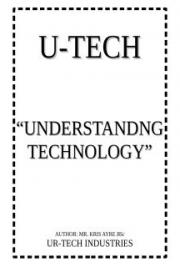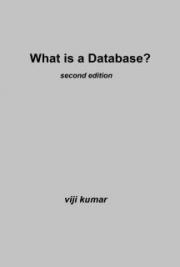Seo tutorial
Seo tutorial
Introduction to seo .......................................................................................................... 4
1. General seo information.............................................................................................. 5
1.1 History of search engines...................................................................................... 5
1.2 Common search engine principles ........................................................................ 6
2. Internal ranking factors ............................................................................................... 8
2.1 Web page layout factors relevant to seo ............................................................... 8
2.1.1 Amount of text on a page................................................................................... 8
2.1.2 Number of keywords on a page ......................................................................... 8
2.1.3 Keyword density and seo ................................................................................... 9
2.1.4 Location of keywords on a page ........................................................................ 9
2.1.5 Text format and seo ........................................................................................... 9
2.1.6 «TITLE» tag....................................................................................................... 9
2.1.7 Keywords in links ............................................................................................ 10
2.1.8 «ALT» attributes in images ............................................................................. 10
2.1.9 Description Meta tag........................................................................................ 10
2.1.10 Keywords Meta tag ........................................................................................ 10
2.2 Site structure ....................................................................................................... 11
2.2.1 Number of pages .............................................................................................. 11
2.2.2 Navigation menu.............................................................................................. 11
2.2.3 Keywords in page names ................................................................................. 11
2.2.4 Avoid subdirectories ........................................................................................ 11
2.2.5 One page – one keyword phrase ...................................................................... 11
2.2.6 Seo and the Main page..................................................................................... 11
2.3 Common seo mistakes ........................................................................................ 12
2.3.1 Graphic header ................................................................................................. 12
2.3.2 Graphic navigation menu................................................................................. 12
2.3.3 Script navigation .............................................................................................. 12
2.3.4 Session identifier.............................................................................................. 12
2.3.5 Redirects .......................................................................................................... 13
2.3.6 Hidden text, a deceptive seo method ............................................................... 13
2.3.7 One-pixel links, seo deception......................................................................... 13
3 External ranking factors............................................................................................. 14
3.1 Why inbound links to sites are taken into account ............................................. 14
3.2 Link importance (citation index, link popularity)............................................... 14
3.3 Link text (anchor text) ........................................................................................ 15
3.4 Relevance of referring pages .............................................................................. 15
3.5 Google PageRank – theoretical basics................................................................ 15
3.6 Google PageRank – practical use ....................................................................... 16
3.7 Increasing link popularity ................................................................................... 18
3.7.1 Submitting to general purpose directories ....................................................... 18
3.7.2 DMOZ directory .............................................................................................. 19
3.7.3 Link exchange.................................................................................................. 19
3.7.4 Press releases, news feeds, thematic resources................................................ 20
4 Indexing a site ............................................................................................................ 21
5 Choosing keywords.................................................................................................... 23
5.1 Initially choosing keywords................................................................................ 23
5.2 Frequent and rare keywords................................................................................ 23
5.3 Evaluating the competition rates of search queries............................................. 24
5.4 Refining your keyword phrases .......................................................................... 24
6 Miscellaneous information on search engines ........................................................... 26
6.1 Google SandBox ................................................................................................. 26
6.2 Google LocalRank .............................................................................................. 27
6.3 Seo tips, assumptions, observations.................................................................... 29
6.4 Creating correct content...................................................................................... 31
6.5 Selecting a domain and hosting .......................................................................... 32
6.6 Changing the site address.................................................................................... 33
7 SEO software review ................................................................................................. 34
7.1 Ranking Monitor................................................................................................. 34
7.2 Link Popularity Checker ..................................................................................... 34
7.3 Site Indexation Tool............................................................................................ 34
7.4 Log Analyzer ...................................................................................................... 34
7.5 Page Rank Analyzer............................................................................................ 35
7.6 Keyword Suggestion Tool .................................................................................. 35
7.7 HTML Analyzer.................................................................................................. 35
7.8 Free seo software license .................................................................................... 35
Instead of a conclusion: promoting your site step by step ............................................ 36
Introduction to seo
This document is intended for webmasters and site owners who want to investigate the issues of seo (search engine optimization) and promotion of their resources. It is mainly aimed at beginners, although I hope that experienced webmasters will also find something new and interesting here. There are many articles on seo on the Internet and this text is an attempt to gather some of this information into a single consistent document.
Information presented in this text can be divided into several parts:
- Clear-cut seo recommendations, practical guidelines.
- Theoretical information that we think any seo specialist should know.
- Seo tips, observations, recommendations from experience, other seo sources, etc.
1. General seo information
1.1 History of search engines
In the early days of Internet development, its users were a privileged minority and the amount of available information was relatively small. Access was mainly restricted to employees of various universities and laboratories who used it to access scientific information. In those days, the problem of finding information on the Internet was not nearly as critical as it is now.
Site directories were one of the first methods used to facilitate access to information resources on the network. Links to these resources were grouped by topic. Yahoo was the first project of this kind opened in April 1994. As the number of sites in the Yahoo directory inexorably increased, the developers of Yahoo made the directory searchable. Of course, it was not a search engine in its true form because searching was limited to those resources who’s listings were put into the directory. It did not actively seek out resources and the concept of seo was yet to arrive.
Such link directories have been used extensively in the past, but nowadays they have lost much of their popularity. The reason is simple – even modern directories with lots of resources only provide information on a tiny fraction of the Internet. For example, the largest directory on the network is currently DMOZ (or Open Directory Project). It contains information on about five million resources. Compare this with the Google search engine database containing more than eight billion documents.
The WebCrawler project started in 1994 and was the first full-featured search engine. The Lycos and AltaVista search engines appeared in 1995 and for many years Alta Vista was the major player in this field.
In 1997 Sergey Brin and Larry Page created Google as a research project at Stanford University. Google is now the most popular search engine in the world.
Currently, there are three leading international search engines – Google, Yahoo and MSN Search. They each have their own databases and search algorithms. Many other search engines use results originating from these three major search engines and the same seo expertise can be applied to all of them. For example, the AOL search engine (search.aol.com) uses the Google database while AltaVista, Lycos and AllTheWeb all use the Yahoo database.
1.2 Common search engine principles To understand seo you need to be aware of the architecture of search engines. They all contain the following main components:
Spider - a browser-like program that downloads web pages.
Crawler – a program that automatically follows all of the links on each web page.
Indexer - a program that analyzes web pages downloaded by the spider and the crawler.
Database– storage for downloaded and processed pages.
Results engine – extracts search results from the database.
Web server – a server that is responsible for interaction between the user and other search engine components.
Specific implementations of search mechanisms may differ. For example, the Spider+Crawler+Indexer component group might be implemented as a single program that downloads web pages, analyzes them and then uses their links to find new resources. However, the components listed are inherent to all search engines and the seo principles are the same.
Spider. This program downloads web pages just like a web browser. The difference is that a browser displays the information presented on each page (text, graphics, etc.) while a spider does not have any visual components and works directly with the underlying HTML code of the page. You may already know that there is an option in standard web browsers to view source HTML code.
Crawler. This program finds all links on each page. Its task is to determine where the spider should go either by evaluating the links or according to a predefined list of addresses. The crawler follows these links and tries to find documents not already known to the search engine.
Indexer. This component parses each page and analyzes the various elements, such as text, headers, structural or stylistic features, special HTML tags, etc.
Database. This is the storage area for the data that the search engine downloads and analyzes. Sometimes it is called the index of the search engine.
Results Engine. The results engine ranks pages. It determines which pages best match a user's query and in what order the pages should be listed. This is done according to the ranking algorithms of the search engine. It follows that page rank is a valuable and interesting property and any seo specialist is most interested in it when trying to improve his site search results. In this article, we will discuss the seo factors that influence page rank in some detail.
Web server. The search engine web server usually contains a HTML page with an input field where the user can specify the search query he or she is interested in. The web server is also responsible for displaying search results to the user in the form of an HTML page.
2. Internal ranking factors
Several factors influence the position of a site in the search results. They can be divided into external and internal ranking factors. Internal ranking factors are those that are controlled by seo aware website owners (text, layout, etc.) and will be described next.
2.1 Web page layout factors relevant to seo
2.1.1 Amount of text on a page
A page consisting of just a few sentences is less likely to get to the top of a search engine list. Search engines favor sites that have a high information content. Generally, you should try to increase the text content of your site in the interest of seo. The optimum page size is 500-3000 words (or 2000 to 20,000 characters).
Search engine visibility is increased as the amount of page text increases due to the increased likelihood of occasional and accidental search queries causing it to be listed. This factor sometimes results in a large number of visitors.
2.1.2 Number of keywords on a page
Keywords must be used at least three to four times in the page text. The upper limit depends on the overall page size – the larger the page, the more keyword repetitions can be made. Keyword phrases (word combinations consisting of several keywords) are worth a separate mention. The best seo results are observed when a keyword phrase is used several times in the text with all keywords in the phrase arranged in exactly the same order. In addition, all of the words from the phrase should be used separately several times in the remaining text. There should also be some difference (dispersion) in the number of entries for each of these repeated words.
Let us take an example. Suppose we optimize a page for the phrase "seo software” (one of our seo keywords for this site) It would be good to use the phrase “seo software” in the text 10 times, the word “seo” 7 times elsewhere in the text and the word “software” 5 times. The numbers here are for illustration only, but they show the general seo idea quite well.
2.1.3 Keyword density and seo
Keyword page density is a measure of the relative frequency of the word in the text expressed as a percentage. For example, if a specific word is used 5 times on a page containing 100 words, the keyword density is 5%. If the density of a keyword is too low, the search engine will not pay much attention to it. If the density is too high, the search engine may activate its spam filter. If this happens, the page will be penalized and its position in search listings will be deliberately lowered.
The optimum value for keyword density is 5-7%. In the case of keyword phrases, you should calculate the total density of each of the individual keywords comprising the phrases to make sure it is within the specified limits. In practice, a keyword density of more than 7-8% does not seem to have any negative seo consequences. However, it is not necessary and can reduce the legibility of the content from a user’s viewpoint.
2.1.4 Location of keywords on a page A very short rule for seo experts – the closer a keyword or keyword phrase is to the beginning of a document, the more significant it becomes for the search engine.
2.1.5 Text format and seo Search engines pay special attention to page text that is highlighted or given special formatting. We recommend:
- use keywords in headings. Headings are text highlighted with the «H» HTML tags. The «h1» and «h2» tags are most effective. Currently, the use of CSS allows you to redefine the appearance of text highlighted with these tags. This means that «H» tags are used less than nowadays, but are still very important in seo work.;
- Highlight keywords with bold fonts. Do not highlight the entire text! Just highlight each keyword two or three times on the page. Use the «strong» tag for highlighting instead of the more traditional «B» bold tag.
2.1.6 «TITLE» tag
This is one of the most important tags for search engines. Make use of this fact in your seo work. Keywords must be used in the TITLE tag. The link to your site that is normally displayed in search results will contain text derived from the TITLE tag. It functions as a sort of virtual business card for your pages. Often, the TITLE tag text is the first information about your website that the user sees. This is why it should not only contain keywords, but also be informative and attractive. You want the searcher to be tempted to click on your listed link and navigate to your website. As a rule, 50-80 characters from the TITLE tag are displayed in search results and so you should limit the size of the title to this length.
2.1.7 Keywords in links
A simple seo rule – use keywords in the text of page links that refer to other pages on your site and to any external Internet resources. Keywords in such links can slightly enhance page rank.
2.1.8 «ALT» attributes in images
Any page image has a special optional attribute known as "alternative text.” It is specified using the HTML «ALT» tag. This text will be displayed if the browser fails to download the image or if the browser image display is disabled. Search engines save the value of image ALT attributes when they parse (index) pages, but do not use it to rank search results.
Currently, the Google search engine takes into account text in the ALT attributes of those images that are links to other pages. The ALT attributes of other images are ignored. There is no information regarding other search engines, but we can assume that the situation is similar. We consider that keywords can and should be used in ALT attributes, but this practice is not vital for seo purposes.
2.1.9 Description Meta tag
This is used to specify page descriptions. It does not influence the seo ranking process but it is very important. A lot of search engines (including the largest one – Google) display information from this tag in their search results if this tag is present on a page and if its content matches the content of the page and the search query.
Experience has shown that a high position in search results does not always guarantee large numbers of visitors. For example, if your competitors' search result description is more attractive than the one for your site then search engine users may choose their resource instead of yours. That is why it is important that your Description Meta tag text be brief, but informative and attractive. It must also contain keywords appropriate to the page.
2.1.10 Keywords Meta tag
This Meta tag was initially used to specify keywords for pages but it is hardly ever used by search engines now. It is often ignored in seo projects. However, it would be advisable to specify this tag just in case there is a revival in its use. The following rule must be observed for this tag: only keywords actually used in the page text must be added to it.
2.2 Site structure
2.2.1 Number of pages
The general seo rule is: the more, the better. Increasing the number of pages on your website increases the visibility of the site to search engines. Also, if new information is being constantly added to the site, search engines consider this as development and expansion of the site. This may give additional advantages in ranking. You should periodically publish more information on your site – news, press releases, articles, useful tips, etc.
2.2.2 Navigation menu As a rule, any site has a navigation menu. Use keywords in menu links, it will give additional seo significance to the pages to which the links refer.
2.2.3 Keywords in page names Some seo experts consider that using keywords in the name of a HTML page file may have a positive effect on its search result position.
2.2.4 Avoid subdirectories
If there are not too many pages on your site (up to a couple of dozen), it is best to place them all in the root directory of your site. Search engines consider such pages to be more important than ones in subdirectories.
2.2.5 One page – one keyword phrase
For maximum seo try to optimize each page for its own keyword phrase. Sometimes you can choose two or three related phrases, but you should certainly not try to optimize a page for 5-10 phrases at once. Such phrases would probably produce no effect on page rank.
2.2.6 Seo and the Main page
Optimize the main page of your site (domain name, index.html) for word combinations that are most important. This page is most likely to get to the top of search engine lists. My seo observations suggest that the main page may account for up to 30-40% percent of the total search traffic for some sites
2.3 Common seo mistakes
2.3.1 Graphic header
Very often sites are designed with a graphic header. Often, we see an image of the company logo occupying the full-page width. Do not do it! The upper part of a page is a very valuable place where you should insert your most important keywords for best seo. In case of a graphic image, that prime position is wasted since search engines can not make use of images. Sometimes you may come across completely absurd situations: the header contains text information, but to make its appearance more attractive, it is created in the form of an image. The text in it cannot be indexed by search engines and so it will not contribute toward the page rank. If you must present a logo, the best way is to use a hybrid approach – place the graphic logo at the top of each page and size it so that it does not occupy its entire width. Use a text header to make up the rest of the width.
2.3.2 Graphic navigation menu
The situation is similar to the previous one – internal links on your site should contain keywords, which will give an additional advantage in seo ranking. If your navigation menu consists of graphic elements to make it more attractive, search engines will not be able to index the text of its links. If it is not possible to avoid using a graphic menu, at least remember to specify correct ALT attributes for all images.
2.3.3 Script navigation
Sometimes scripts are used for site navigation. As an seo worker, you should understand that search engines cannot read or execute scripts. Thus, a link specified with the help of a script will not be available to the search engine, the search robot will not follow it and so parts of your site will not be indexed. If you use site navigation scripts then you must provide regular HTML duplicates to make them visible to everyone – your human visitors and the search robots.
2.3.4 Session identifier
Some sites use session identifiers. This means that each visitor gets a unique parameter (&session_id=) when he or she arrives at the site. This ID is added to the address of each page visited on the site. Session IDs help site owners to collect useful statistics, including information about visitors' behavior. However, from the point of view of a search robot, a page with a new address is a brand new page. This means that, each time the search robot comes to such a site, it will get a new session identifier and will consider the pages as new ones whenever it visits them.
Search engines do have algorithms for consolidating mirrors and pages with the same content. Sites with session IDs should, therefore, be recognized and indexed correctly. However, it is difficult to index such sites and sometimes they may be indexed incorrectly, which has an adverse effect on seo page ranking. If you are interested in seo for your site, I recommend that you avoid session identifiers if possible.
2.3.5 Redirects Redirects make site analysis more difficult for search robots, with resulting adverse effects on seo. Do not use redirects unless there is a clear reason for doing so.
2.3.6 Hidden text, a deceptive seo method
The last two issues are not really mistakes but deliberate attempts to deceive search engines using illicit seo methods. Hidden text (when the text color coincides with the background color, for example) allows site owners to cram a page with their desired keywords without affecting page logic or visual layout. Such text is invisible to human visitors but will be seen by search robots. The use of such deceptive optimization methods may result in banning of the site. It could be excluded from the index (database) of the search engine.
2.3.7 One-pixel links, seo deception
This is another deceptive seo technique. Search engines consider the use of tiny, almost invisible, graphic image links just one pixel wide and high as an attempt at deception, which may lead to a site ban.
3 External ranking factors
3.1 Why inbound links to sites are taken into account
As you can see from the previous section, many factors influencing the ranking process are under the control of webmasters. If these were the only factors then it would be impossible for search engines to distinguish between a genuine high-quality document and a page created specifically to achieve high search ranking but containing no useful information. For this reason, an analysis of inbound links to the page being evaluated is one of the key factors in page ranking. This is the o







